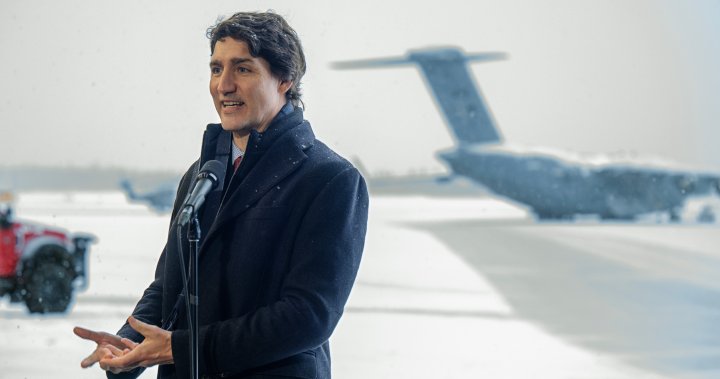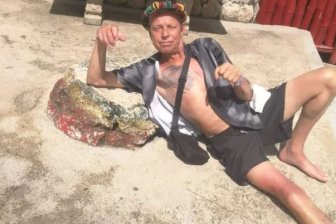ANALYSIS: To lead on Arctic issues, Trudeau must be more present in the North – National
The Senate’s committee on national security and defence released a report Wednesday examining Arctic security and “urgent needs.”
There were many recommendations, calls to action and urgent warnings, with a conclusion that “more must be done” by Canada’s government to secure its Arctic territory and nourish the health and prosperity of the people who live there.
In that respect, it was like Senate reports issued in 2019, 2017, and 2015. Or like the report issued just last week by MPs on the House of Commons Standing Committee on Indigenous and Northern Affairs which also came to roughly the same conclusion — that “many of the recommendations relating to housing, food security and infrastructure in the Arctic have appeared in previous reports.”
Two chambers — the House and the Senate — with broadly similar conclusions about government lethargy on Arctic issues all point to inaction and perhaps even disinterest at the very top, by a prime minister who, according to a Global News analysis of his publicly available daily itineraries, has spent precisely all or part of 10 days during his 2,658 days in office north of the 60th parallel.
It’s 11 days if, as some do, one counts Churchill, Man., as an Arctic community.
Prime Minister Justin Trudeau is to be commended for being the first prime minister to publish a daily itinerary, even if it is often vague and barren of important details, so that reporters can track a prime minister’s whereabouts.

Trudeau visits Yukon on pre-planned trip after U.S. shoots down flying object
That said, even though Stephen Harper’s office never published a daily itinerary, we do know that during eight of the nine years he was in office, he spent a week every summer touring communities in the Arctic.
That would be at least 50 days north of the 60th parallel in addition to other one-off trips he made to the North during his time in office.
Those Arctic tours certainly drew criticism at the time as expensive photo ops with too much focus on the military and not enough on the social needs of those in the north. But at least he was there.
And where a prime minister goes, so goes the parliamentary press corps. And sure enough, press gallery reporters and camera crews followed Harper across the Arctic every summer — I was fortunate to draw that assignment a few times — which meant that, for at least one week a year, the country’s national television newscasts and national papers — whose assignment editors all live in Montréal or Toronto or Vancouver — would lead with stories about the North.
During eight summer visits, Harper touched down in breathtaking Pangnirtung, Nunavut; remote Resolute, Nunavut; bustling Inuvik, N.W.T.; at a hydro-electric dam in tiny Mayo, Yukon; and in many other communities.
He talked to schoolchildren in Tuktoyaktuk, N.W.T., before hopping on an all-terrain vehicle and speeding up and down the airport runway in that community in apparent violation of Transport Canada regulations.
Globe and Mail columnist John Ibbitson observed at the time that, while in the Arctic, Harper seemed a changed person, that he was “frisky.” And, indeed, in interviews, Harper spoke about the value of visits to the North to his own personal outlook with enthusiasm.
“It is something I look forward to all winter long, and is the highlight of my summer,” Harper told reporters in Inuvik, N.W.T. in 2010.

Russian chaos overshadows Trudeau’s visit to Iceland
Did it influence Arctic priorities on the Harper government’s agenda? Maybe. Maybe not. Those House of Commons and Senate committee reports over the years would find fault with Harper’s Arctic record just as they have found Trudeau’s record lacking.
But Harper, at least, showed enough interest, enough enthusiasm, to be there in person.
Not only that, but Harper convened meetings of his full cabinet at least once in the North. During a meeting in Iqaluit, he insisted his cabinet and parliamentary reporters covering the meeting be served barbequed seal meat at the main meal.
And in 2010, during Canada’s G7 presidency, Harper’s finance minister Jim Flaherty gathered G7 finance ministers and central bank governors in Iqaluit — in February. Again: it may have been a photo op — but for a few days, it focused the attention of Canada and the world on the eastern Arctic.
“I agree with you,” Senator Margaret Dawn Anderson, a member of the Senate defence committee and an Inuvialuk raised in Tuktoyaktuk, said when asked by Global News on Wednesday at a Parliament Hill press conference if those annual Arctic tours by Harper were valuable.
“The government’s presence in the Arctic is important. It’s probably more so important now given the geopolitical environment and the focus on Arctic security and the challenges that we face in the Arctic.”
Anderson, a member of the Progressive Senate Group, is among a group of senators who believe Trudeau ought to consider reviving the tradition Harper started and set aside time in the year for a substantive tour of Arctic communities.
“I agree that it would be beneficial — not just for the Arctic but for Canada — to resuscitate if you will, the trips to the Arctic. Being on the ground, there is no other experience that shapes and informs as much as the lived experience,” she said Wednesday.

Arctic Power Play: How climate change and Russian aggression are creating a perfect storm in Canada’s north
As prime minister, Trudeau has visited only a handful of Arctic communities, according to his published itineraries. Since taking office in the fall of 2015, he has spent all or part of five days in Iqaluit, three in Whitehorse, and one each in Yellowknife, N.W.T.; Arctic Bay, Nunavut; and Cambridge Bay, Nunavut.
“We cannot understand the Arctic if we don’t go there,” Senator Pierre-Hugues Boisvenu, a Conservative from Québec who is also a member of the Senate defence committee, said in French during Wednesday’s press conference.
“Personally speaking, I’ve been to the Arctic two or three times and this was really something to increase understanding. So our prime minister has to be the first to act. If our leaders want to intervene in the Arctic, understand the Arctic — you cannot do it without actually physically going there,” he added.
“And I believe that the prime minister needs to be present on an annual basis to meet with the communities, to have discussions with the communities, to understand their desire for self-determination. And this is not possible from Ottawa.”
David Akin is chief political correspondent for Global News.




